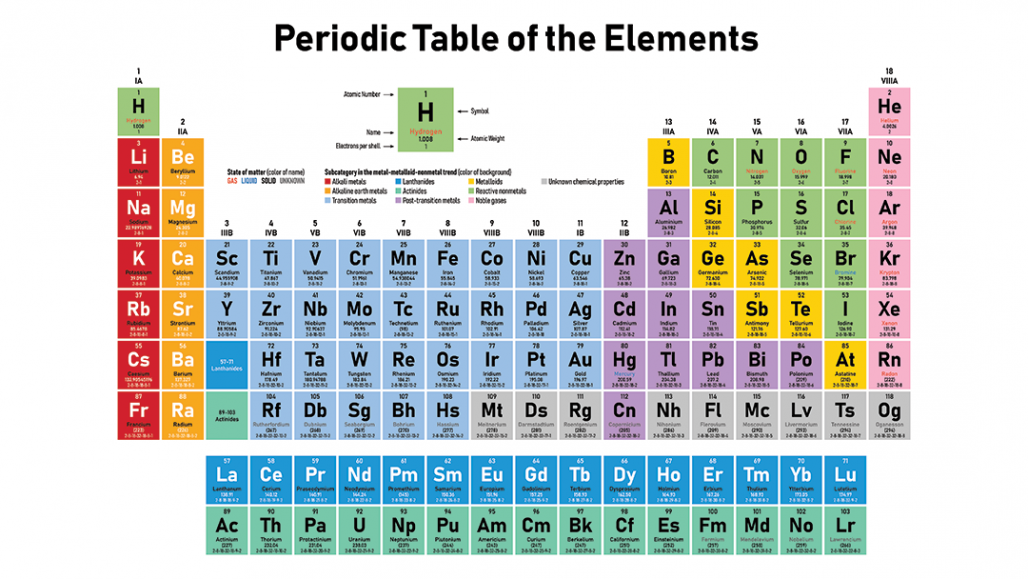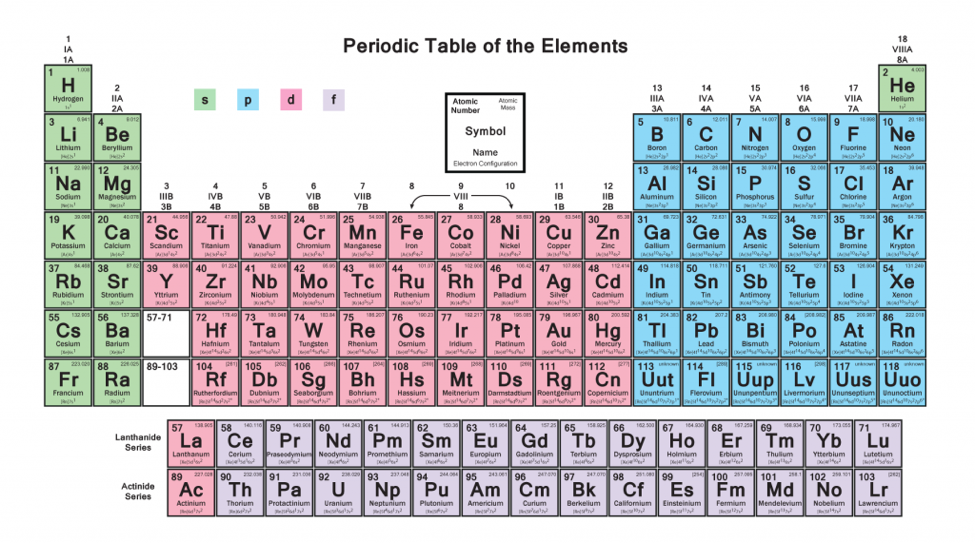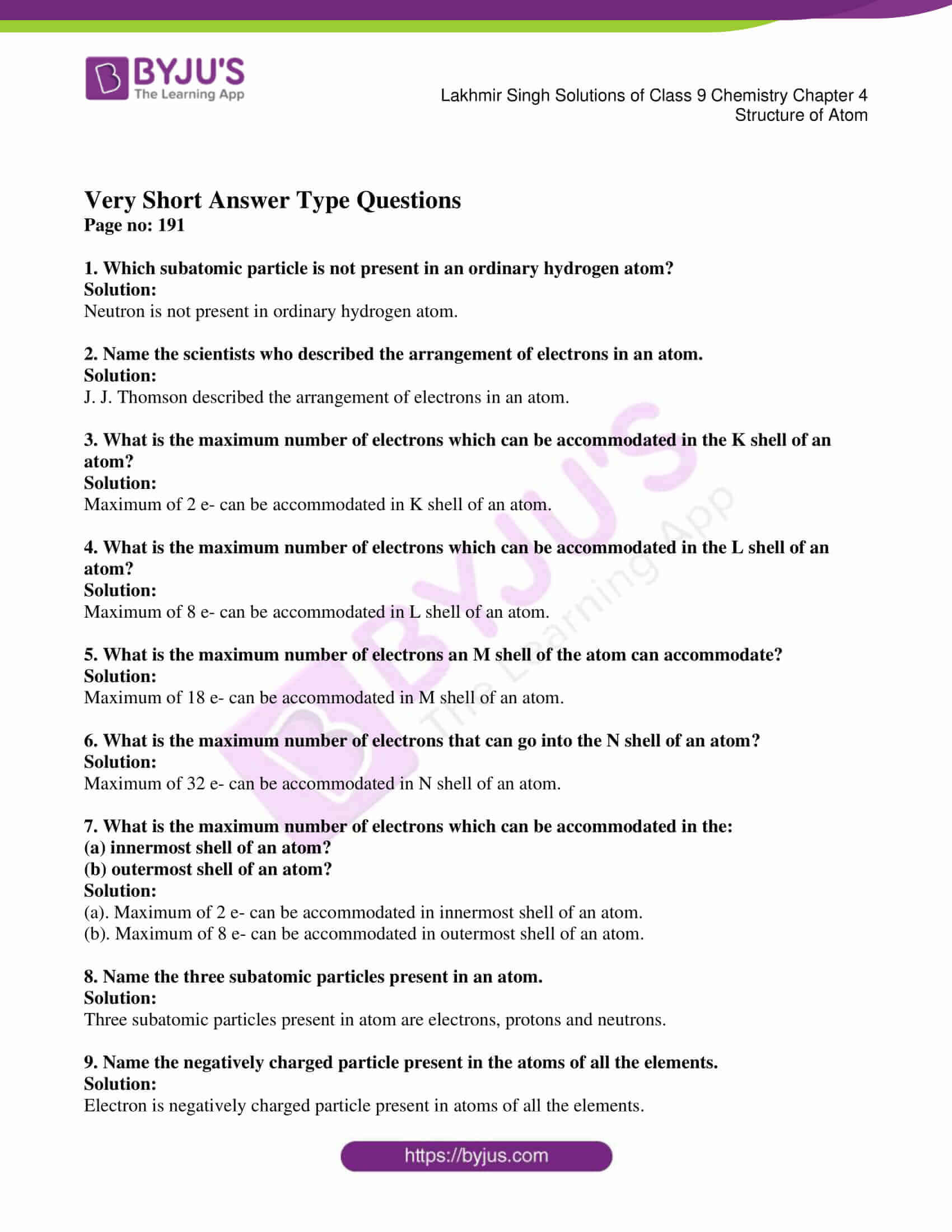- What Element Has Three Electrons
- Elements With 9 Electrons
- Number Of Electrons In Hydrogen Valence Shell
How to calculate the number of electrons in an ion

To calculate the number of electrons in an ion that carries a positive charge, you must recall that when an ion carries a positive charge, the number of electrons are fewer than the number of protons. So to get the number of electrons, you must subtract the size of charge (which is often written as a superscript on the right side of the symbol) from the atomic number or proton number. Let’s use figure 2 as an example. As you can see, Mg has an atomic number of 12 and a charge of +2, so to get the number of electrons for Mg ion, we must subtract 2 from the atomic number. Thus, 12-2= 10 electrons.
Generally, the number of electrons—alongside with protons and neutrons—in an atom can be determined from a set of simple rules. The number of protons in the nucleus of the atom is equal to the atomic number (Z). It has 2 electrons in K-shell, 8 electrons in L-shell, 1 electron in M-shell. Question: If K and L shells of an atom are full then what would be the total number of electrons in the atoms? Ans: The maximum number of electrons(2n 2) to be accommodated by K(n=1) and L(n=2) shells of an atom are 2(2.1 2) and 8(2.2 2). If K and L shells are full. In this video we’ll use the Periodic table and a few simple rules to find the number of protons and electrons for the Beryllium ion (Be2+). From the Periodic. Here's what I would suggest. If a complete set of quantum numbers is given to you, then you can say for a fact that you're only dealing with one electron. As you know, quantum numbers are used to describe the location and spin of an electron that surrounds an atom's nucleus. More specifically, the four quantum numbers will tell you the energy level on which the electron resides - given by n. Number of Electrons - How to find the Number of Electrons - Examples The atomic number is based on the number of Protons in the atom of an element. (Note: Atoms must also have equal numbers of Electrons & Protons.) So, if we know the atomic number of an element then we also know how many Protons are in an element and therefore the number of electrons in an element.
Likewise, to calculate the number of electrons for an ion that carries a negative charge, you must recall that when an ion carries a negative charge, the number of electrons are more than the number of protons. So to get the number of electrons, you must add the size of charge to the atomic or proton number. So from figure 3 Arturia v collection for mac. , the number of electrons for chloride ion is 17 + 1 = 18 electrons.
To learn how atoms form ions, click here.
To learn more about subatomic particles, click here
To learn why a cation is smaller than its neutral atom, click here
Quantum Numbers,
Atomic Orbitals, and
Electron Configurations
Contents:
Quantum Numbers and Atomic Orbitals
1. Principal Quantum Number (n)
2.Angular Momentum (Secondary, Azimunthal) Quantum Number (l)
3.Magnetic Quantum Number (ml)
4.Spin Quantum Number (ms)
Table of Allowed Quantum Numbers
Writing Electron Configurations
Properties of Monatomic Ions
References
Quantum Numbers and Atomic Orbitals
By solving the Schrödinger equation (Hy = Ey), we obtain a set of mathematical equations, called wave functions (y), which describe the probability of finding electrons at certain energy levels within an atom.
A wave function for an electron in an atom is called an atomic orbital Bts deezer songs. ; this atomic orbital describes a region of space in which there is a high probability of finding the electron. Energy changes within an atom are the result of an electron changing from a wave pattern with one energy to a wave pattern with a different energy (usually accompanied by the absorption or emission of a photon of light).
Each electron in an atom is described by four different quantum numbers. The first three (n, l, ml) specify the particular orbital of interest, and the fourth (ms) specifies how many electrons can occupy that orbital.
- Principal Quantum Number (n): n = 1, 2, 3, …, ∞
Specifies the energy of an electron and the size of the orbital (the distance from the nucleus of the peak in a radial probability distribution plot). All orbitals that have the same value of n are said to be in the same shell (level). For a hydrogen atom with n=1, the electron is in its ground state; if the electron is in the n=2 orbital, it is in an excited state. The total number of orbitals for a given n value is n2.
- Angular Momentum (Secondary, Azimunthal) Quantum Number (l): l = 0, .., n-1.
Specifies the shape of an orbital with a particular principal quantum number. The secondary quantum number divides the shells into smaller groups of orbitals called subshells (sublevels). Usually, a letter code is used to identify l to avoid confusion with n:
| l | 0 | 1 | 2 | 3 | 4 | 5 | .. |
| Letter | s | p | d | f | g | h | .. |
The subshell with n=2 and l=1 is the 2p subshell; if n=3 and l=0, it is the 3s subshell, and so on. The value of l also has a slight effect on the energy of the subshell; the energy of the subshell increases with l (s < p < d < f).
- Magnetic Quantum Number (ml): ml = -l, .., 0, .., +l.
Specifies the orientation in space of an orbital of a given energy (n) and shape (l). This number divides the subshell into individual orbitals which hold the electrons; there are 2l+1 orbitals in each subshell. Thus the s subshell has only one orbital, the p subshell has three orbitals, and so on.
- Spin Quantum Number (ms): ms = +½ or -½.
Specifies the orientation of the spin axis of an electron. An electron can spin in only one of two directions (sometimes called up and down).
The Pauli exclusion principle (Wolfgang Pauli, Nobel Prize 1945) states that no two electrons in the same atom can have identical values for all four of their quantum numbers. What this means is that no more than two electrons can occupy the same orbital, and that two electrons in the same orbital must have opposite spins.
Because an electron spins, it creates a magnetic field, which can be oriented in one of two directions. For two electrons in the same orbital, the spins must be opposite to each other; the spins are said to be paired. These substances are not attracted to magnets and are said to be diamagnetic. Atoms with more electrons that spin in one direction than another contain unpaired electrons. These substances are weakly attracted to magnets and are said to be paramagnetic.
Table of Allowed Quantum Numbers
| n | l | ml | Number of orbitals | Orbital Name | Number of electrons |
| 1 | 0 | 0 | 1 | 1s | 2 |
| 2 | 0 | 0 | 1 | 2s | 2 |
| 1 | -1, 0, +1 | 3 | 2p | 6 | |
| 3 | 0 | 0 | 1 | 3s | 2 |
| 1 | -1, 0, +1 | 3 | 3p | 6 | |
| 2 | -2, -1, 0, +1, +2 | 5 | 3d | 10 | |
| 4 | 0 | 0 | 1 | 4s | 2 |
| 1 | -1, 0, +1 | 3 | 4p | 6 | |
| 2 | -2, -1, 0, +1, +2 | 5 | 4d | 10 | |
| 3 | -3, -2, -1, 0, +1, +2, +3 | 7 | 4f | 14 |
Writing Electron Configurations

The distribution of electrons among the orbitals of an atom is called the electron configuration. The electrons are filled in according to a scheme known as the Aufbau principle ('building-up'), which corresponds (for the most part) to increasing energy of the subshells:
1s, 2s, 2p, 3s, 3p, 4s, 3d, 4p, 5s, 4d, 5p, 6s, 4f, 5d, 6p, 7s, 5f
It is not necessary to memorize this listing, because the order in which the electrons are filled in can be read from the periodic table in the following fashion:
Or, to summarize:
In electron configurations, write in the orbitals that are occupied by electrons, followed by a superscript to indicate how many electrons are in the set of orbitals (e.g., H 1s1)
What Element Has Three Electrons
Another way to indicate the placement of electrons is an orbital diagram, in which each orbital is represented by a square (or circle), and the electrons as arrows pointing up or down (indicating the electron spin). When electrons are placed in a set of orbitals of equal energy, they are spread out as much as possible to give as few paired electrons as possible (Hund's rule).

examples will be added at a later date
In a ground state configuration, all of the electrons are in as low an energy level as it is possible for them to be. When an electron absorbs energy, it occupies a higher energy orbital, and is said to be in an excited state.
Properties of Monatomic Ions
The electrons in the outermost shell (the ones with the highest value of n) are the most energetic, and are the ones which are exposed to other atoms. This shell is known as the valence shell. The inner, core electrons (inner shell) do not usually play a role in chemical bonding.
When you open a file, Movist creates a playlist and finds and fills the series and subtitle files in the same folder. You can also manually add and remove files. You can save the playlist and recall it later. You do not need to manage the playlist files. Movist manages all of them. Just give the playlist a name. Movist.
Elements with similar properties generally have similar outer shell configurations. For instance, we already know that the alkali metals (Group I) always form ions with a +1 charge; the 'extra' s1 electron is the one that's lost:

| IA | Li | 1s22s1 | Li+ | 1s2 |
| Na | 1s22s22p63s1 | Na+ | 1s22s22p6 | |
| K | 1s22s22p63s23p64s1 | K+ | 1s22s22p63s23p6 |
The next shell down is now the outermost shell, which is now full — meaning there is very little tendency to gain or lose more electrons. The ion's electron configuration is the same as the nearest noble gas — the ion is said to be isoelectronic with the nearest noble gas. Atoms 'prefer' to have a filled outermost shell because this is more electronically stable.
- The Group IIA and IIIA metals also tend to lose all of their valence electrons to form cations.
| IIA | Be | 1s22s2 | Be2+ | 1s2 |
| Mg | 1s22s22p63s2 | Mg2+ | 1s22s22p6 | |
| IIIA | Al | 1s22s22p63s23p1 | Al3+ | 1s22s22p6 |
- The Group IV and V metals can lose either the electrons from the p subshell, or from both the s and p subshells, thus attaining a pseudo-noble gas configuration.
| IVA | Sn | [Kr]4d105s25p2 | Sn2+ | [Kr]4d105s2 |
| Sn4+ | [Kr]4d10 | |||
| Pb | [Xe]4f145d106s26p2 | Pb2+ | [Xe]4f145d106s2 | |
| Pb4+ | [Xe]4f145d10 | |||
| VA | Bi | [Xe]4f145d106s26p3 | Bi3+ | [Xe]4f145d106s2 |
| Bi5+ | [Xe]4f145d10 |
- The Group IV - VII non-metals gain electrons until their valence shells are full (8 electrons).
| IVA | C | 1s22s22p2 | C4- | 1s22s22p6 |
| VA | N | 1s22s22p3 | N3- | 1s22s22p6 |
| VIA | O | 1s22s22p4 | O2- | 1s22s22p6 |
| VIIA | F | 1s22s22p5 | F- | 1s22s22p6 |
Elements With 9 Electrons
- The Group VIII noble gases already possess a full outer shell, so they have no tendency to form ions.
- Transition metals (B-group) usually form +2 charges from losing the valence s electrons, but can also lose electrons from the highest d level to form other charges.
| B-group | Fe | 1s22s22p63s23p63d64s2 | Fe2+ | 1s22s22p63s23p63d6 |
| Fe3+ | 1s22s22p63s23p63d5 |
References
Martin S. Silberberg, Chemistry: The Molecular Nature of Matter and Change, 2nd ed. Boston: McGraw-Hill, 2000, p. 277-284, 293-307.

Number Of Electrons In Hydrogen Valence Shell

Comments are closed.